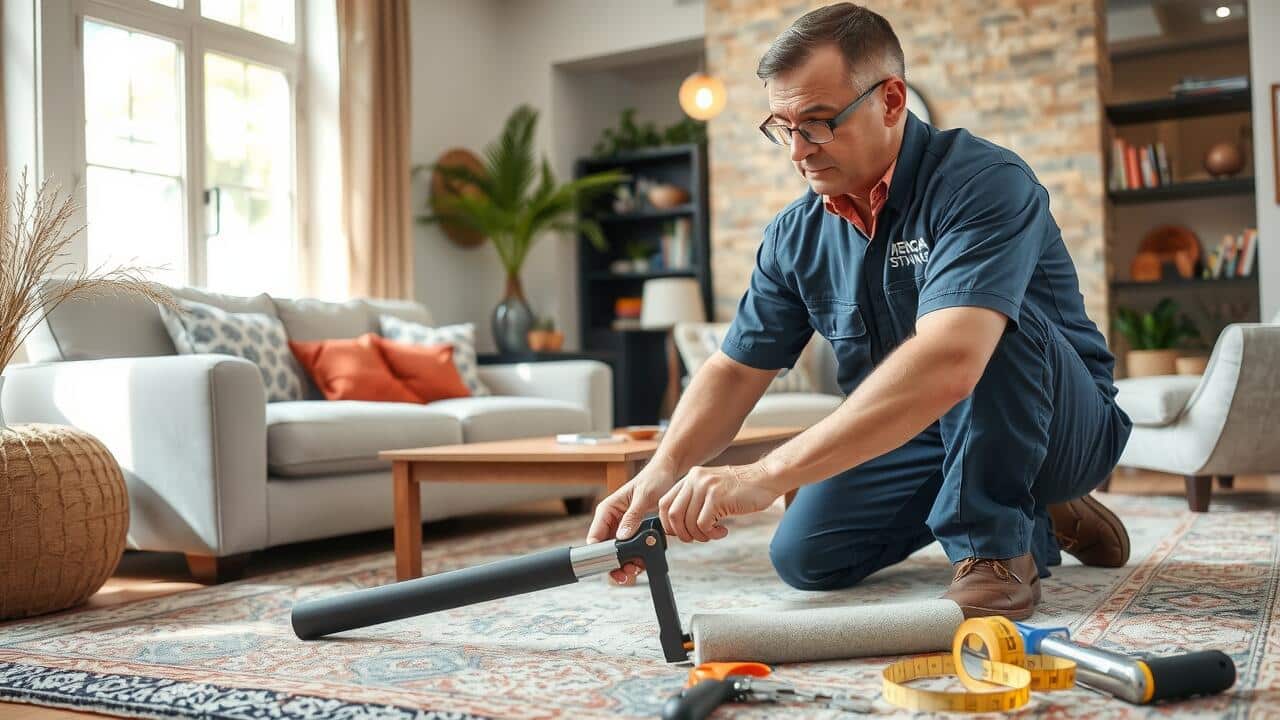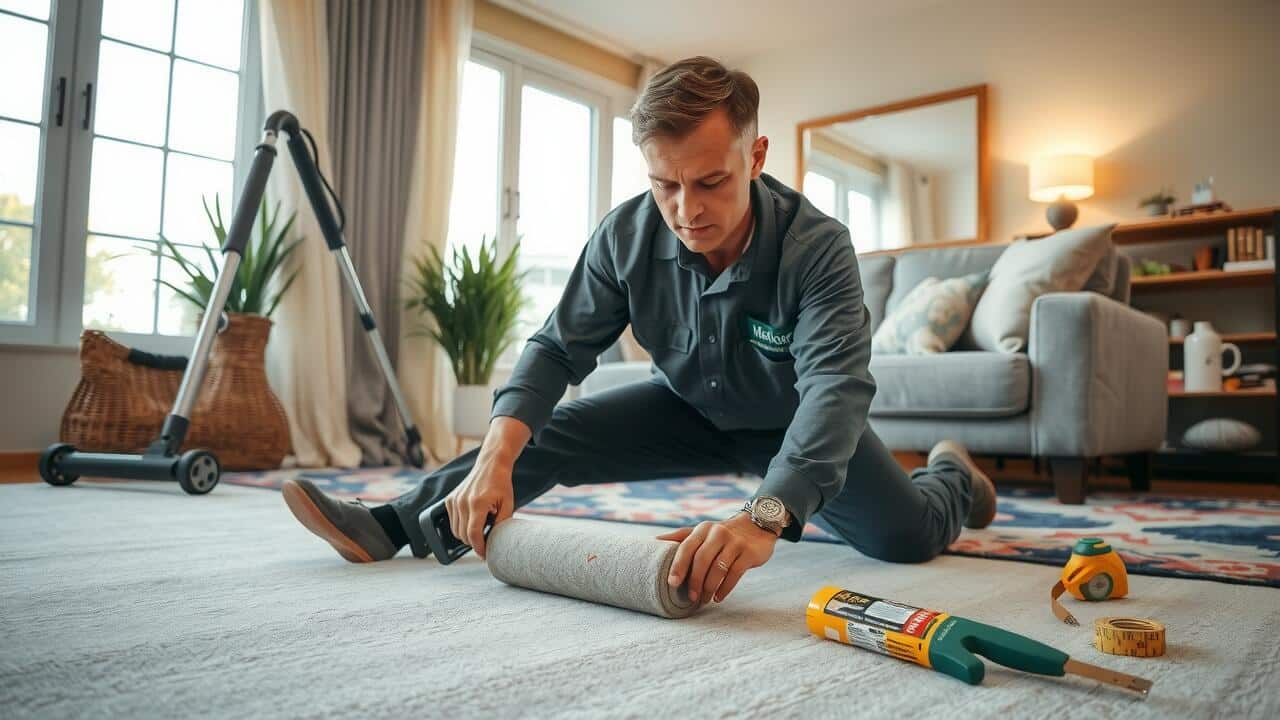Table Of Contents
Tools Required for DIY Restretching
When tackling a DIY carpet restretching project, having the right tools can make the process easier and more effective. A knee kicker is an essential tool, as it helps to stretch the carpet properly into place. Additionally, a carpet stretcher can be beneficial, especially for larger areas where more tension is required. Other necessary tools include a utility knife for trimming excess carpet, a seam sealer to secure any seams, and a staple gun for fastening the carpet edges to the tack strips. Keeping these tools on hand ensures a smoother restretching experience.
In the realm of Carpet Repair and Re-stretching, some other items may come in handy. A measuring tape is crucial for accurately gauging room dimensions and ensuring proper fits. A carpet scraper should be included to remove old carpet backing or adhesive for a clean work surface. Protective gear like knee pads can also enhance comfort during the labor-intensive task. With the right tools and preparation, DIY carpet restretching can be a manageable and rewarding project.
Essential Equipment You’ll Need
To successfully perform carpet repair and re-stretching, having the right tools is crucial. A carpet stretcher is the most important piece of equipment for this task. It allows you to pull the carpet tight, ensuring a smooth and wrinkle-free surface. Additionally, a knee kicker is helpful for adjusting the edges of the carpet and fitting it around corners or in tight spaces. You will also need a utility knife for trimming excess carpet and a staple gun to secure the carpet in place.
Other necessary tools include carpet seam tape if you need to join two pieces together and a hammer for tapping down edges after stretching. A measuring tape will help you get accurate dimensions for cutting and positioning. These essential pieces of equipment make the process of carpet repair and re-stretching more manageable, leading to a better finished product. Proper preparation and the right tools will ensure that your carpet enjoys a longer life with minimal maintenance.
Common Myths About Carpet Restretching
Many homeowners believe that carpet restretching is an overly complicated process best left to professionals. This myth can stem from the fear of damaging the carpet or having it look worse after the attempt. In reality, with the right tools and a bit of patience, individuals can successfully perform this task themselves. Carpet Repair and Re-stretching is achievable for anyone willing to learn the proper techniques.
Another common misconception is that carpets need to be replaced once they start to show signs of sagging or buckling. While these issues can be visually unappealing, they often result from wear and tear rather than severe damage. In many cases, carpet restretching can restore the appearance and longevity of the carpet, making it a cost-effective solution for homeowners looking to maintain their flooring without a complete replacement.
Debunking Popular Misconceptions
Many homeowners believe that once carpet has stretched out, it’s permanently damaged and needs to be replaced. This misconception can lead to unnecessary expenses and disruption. Carpet Repair and Re-stretching can effectively fix issues like wrinkles and buckling, restoring the carpet’s appearance and prolonging its life. With the right tools and techniques, you can rejuvenate your space without the need for costly replacements.
Another common myth is that professional carpet stretching is the only option available. While hiring an expert brings certain advantages, such as experience and efficiency, many DIY enthusiasts find success in tackling carpet repair themselves. With guidance and suitable equipment, individuals can successfully manage the restretching process. This approach not only saves money but also allows homeowners to take pride in maintaining their own living spaces.
Maintenance Tips After Restretching
To ensure the longevity of your freshly restretched carpet, regular maintenance is essential. Vacuuming frequently helps remove dirt and debris that can accumulate in the fibers, preventing wear and tear. Additionally, consider using a carpet protector, which can help safeguard against stains and spills. A simple routine can significantly enhance the appearance and durability of your carpet.
After any Carpet Repair and Re-stretching, avoid dragging heavy furniture across the surface. This practice can damage the carpet fibers and lead to new wrinkles or sagging areas. Instead, lift furniture when moving it and consider using coasters or furniture sliders for added protection. By taking these preventive measures, you can keep your carpet looking its best for an extended period.
How to Care for Your Carpet
Regular maintenance is key to prolonging the life of your carpet. Vacuuming on a weekly basis helps remove dirt and debris that can cause fibers to wear down over time. For high-traffic areas, consider using a vacuum with strong suction to lift dirt more effectively. Additionally, placing mats or rugs at entrances can reduce the amount of dirt tracked onto your carpet. If spills occur, prompt cleaning is essential to avoid stains and damage.
Investing in professional Carpet Repair and Re-stretching services can also enhance the longevity of your flooring. These services can address issues such as loose seams and ripples, ensuring your carpet remains smooth and taut. After restretching, regular cleaning and maintenance will further ensure its appearance and durability. With proper care, your carpet can continue to add warmth and comfort to your home for years.
FAQS
What are the signs that my carpet needs to be restretched?
Common signs that your carpet needs to be restretched include visible wrinkles or ripples, uneven surfaces, or areas where the carpet pulls away from the walls or edges.
Can I restretch my carpet myself, or should I hire a professional?
While it is possible to restretch your carpet yourself with the right tools and techniques, hiring a professional is recommended for best results, especially if you’re inexperienced or the carpet is large.
How long does the carpet restretching process take?
The duration of the carpet restretching process can vary, but it typically takes between 1 to 3 hours depending on the size of the area and the complexity of the job.
Will restretching my carpet damage it in any way?
When done correctly, restretching should not damage your carpet. However, improper techniques can lead to fraying or tearing, so it’s important to follow proper methods or hire a professional.
How can I maintain my carpet after it has been restretched?
To maintain your carpet after restretching, regularly vacuum it, avoid heavy furniture on the seams, and schedule professional cleanings to prolong its lifespan.



